If there’s one group of saltwater favorites that anglers and seafood lovers agree on, it’s Snapper. But there’s one question they’ve been pondering over for decades – maybe even centuries! Just exactly, how many Snapper fish species are out there?
The answer might surprise you… There are more than 250 varieties of these fish lurking across the globe.

Found in tropical and subtropical waters, these fish are prized both for the thrill of the catch as well as their spot on the dinner table. From the iconic Gulf Red Snapper to exotic varieties in the Indo-Pacific, there’s a Snapper for just about every kind of fishing fanatic.
In this guide, we’ll explore some of the most famous Snapper fish species worldwide, give a nod to a few honorable mentions, and answer common questions about this diverse family. Ready to discover what makes Snapper so special? Let’s dive in…
What is a Snapper?
“Snapper” is a common name for fish belonging to the Lutjanidae family, a group of reef-dwelling species found in tropical and subtropical waters around the world. With more than 250 recognized Snapper fish species, they’re an incredibly diverse family.
The vast majority of Snapper species share a few traits:
- Habitat: They usually lurk around reefs, rocky bottoms, and coastal structures.
- Appearance: Many have vibrant red, pink, or yellow coloring, with sharp canine-like teeth that give them their name.
- Behavior: Snappers are opportunistic predators, feeding on smaller fish, crustaceans, and squid. They’re also hard-fighters who love to give you a run for your money.
- Popularity: They’re prized both by recreational anglers for their fighting spirit and by foodies and chefs around the world for their firm, mild-flavored meat.
It’s worth noting that common Snapper names can vary by region. For example, in the US you might hear “Mangrove Snapper,” while in Australia the same species is often called “Mangrove Jack.” This adds to the charm – and the confusion – when talking about different Snapper fish species across the globe. We’re here to help clear things up a little.
Types of Snapper Fish Species
With so many Snapper fish species out there, it’s impossible to cover them all. Some are regional favorites, while others are global icons. To give you a clear picture, we’ve narrowed it down to 12 of the most popular and widely recognized Snappers you’re most likely to encounter on your fishing adventures.
1. Red Snapper (Western Atlantic & Gulf of America)

The most famous of all Snapper fish species, the Red Snapper is a true icon in the Gulf of America and along the southeastern US coast. Anglers prize them for their firm, white flesh and their fighting power once hooked.
Where to find them: From North Carolina down to Florida and throughout the Gulf of America. Beware that you may hear fish caught beyond here called “Red Snapper” (such as Vermilion Snapper), but these won’t be the real deal.
Traits: Distinctive rosy-red bodies with a sloped profile and large eyes. Adults often weigh 5–20 pounds, though much larger catches aren’t uncommon.
2. Cubera Snapper (Florida to Caribbean)
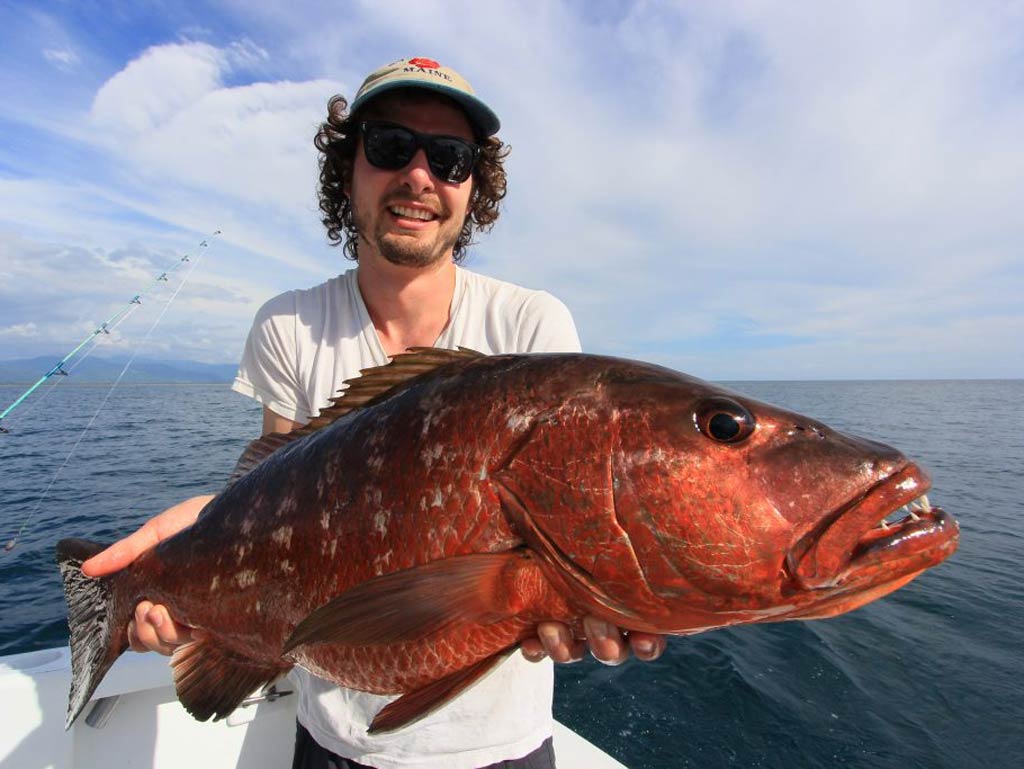
The heavyweight champion of the Snapper family, Cubera Snapper are the largest species in the group. Some giants top a whopping 100 pounds! Known for their brute strength, they’re a bucket-list fish for many offshore anglers.
Where to find them: The Western Atlantic, most common near the Florida Keys, the Caribbean, and in Central and South America.
Traits: Dark brown to gray bodies, thick lips, and prominent canine teeth. Their sheer size makes them a serious test of skill and stamina.
3. Mangrove Snapper / Mangrove Jack (Americas & Indo-Pacific)
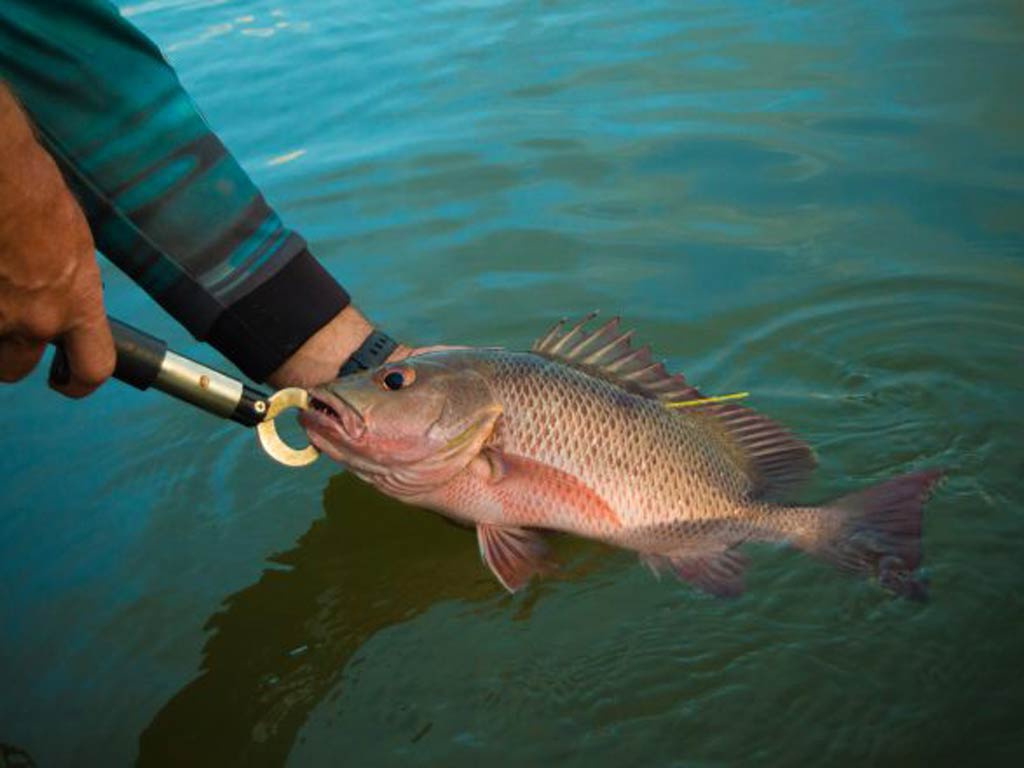
This species goes by different names depending on where you’re fishing. Known as Mangrove Snapper in the Americas, their name switches to Mangrove Jack in Australia and the Indo-Pacific. Either way, they’re one of the most accessible and popular Snappers worldwide.
Where to find them: Inshore mangroves, estuaries, nearshore reefs, and sometimes even offshore.
Traits: These smaller fish are dark gray to reddish-brown, with a reputation for being aggressive feeders. They’re fantastic sport fish and equally delicious on the plate.
4. Mutton Snapper (Florida & Caribbean)
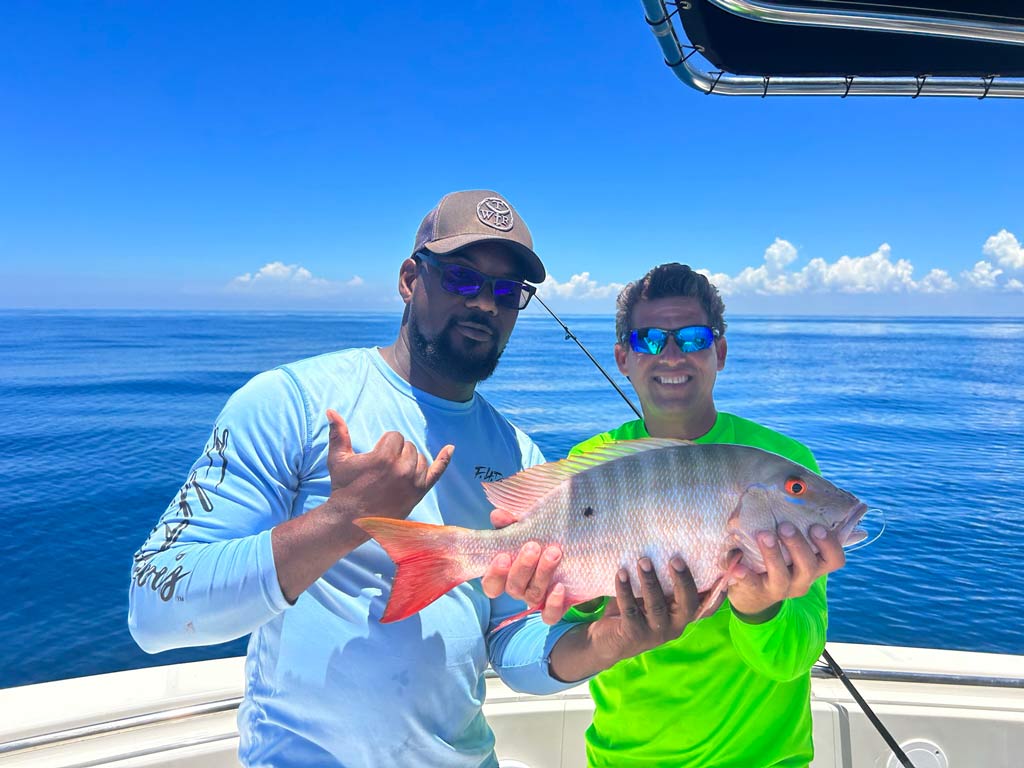
Recognizable by their olive-green backs and reddish flanks, Mutton Snapper are known for their beauty as much as their taste. They grow up to 30 pounds and often put up a stubborn fight at the end of a line.
Where to find them: Western Atlantic – common in the Florida Keys, the Bahamas, throughout the Caribbean, and into South America.
Traits: Olive-green top fading to pinkish sides, with a distinctive black spot on the upper flank and a pointed snout.
5. Lane Snapper (Gulf of America)
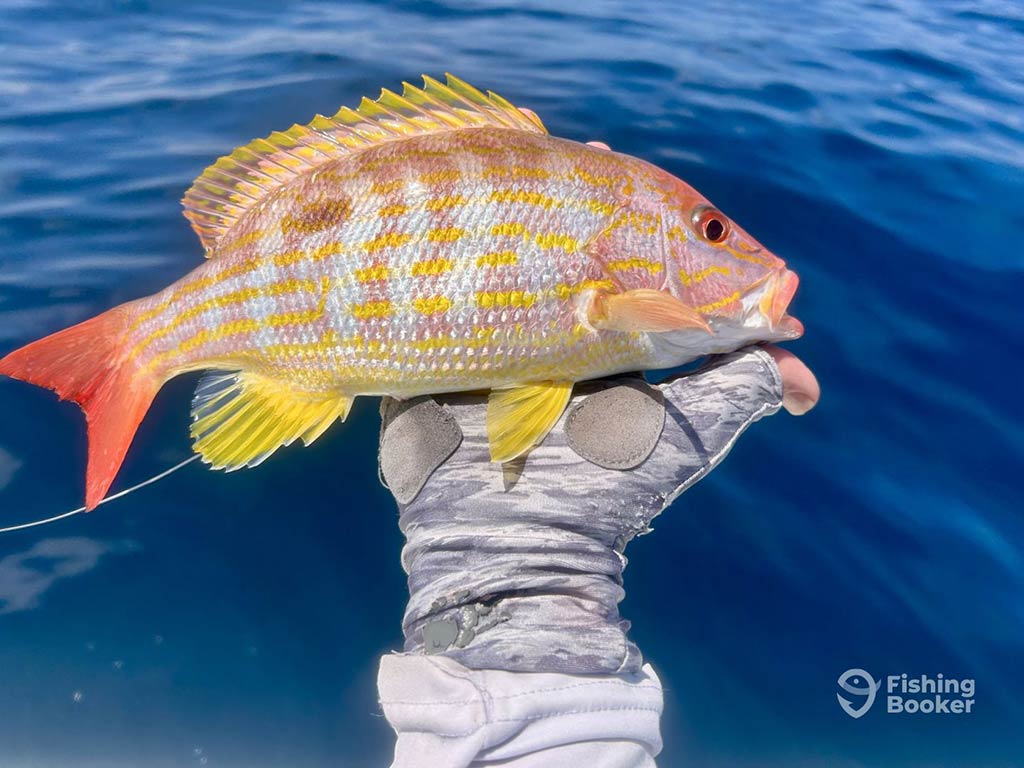
A smaller species, Lane Snapper usually weigh under 3 pounds, making them perfect for beginner anglers. Their yellowish stripes and black spot on the side make them easy to identify, and they’re a fun, family-friendly fish to cast a line for.
Where to find them: Shallow reefs and sandy bottoms in the Gulf of America, the Caribbean, and southern Atlantic waters.
Traits: Silver bodies with yellowish stripes, plus a dark spot near the dorsal fin. Always on the smaller side.
6. Red Emperor Snapper (Australia & Indo-Pacific)

Easily recognized by their striking red bodies and juvenile stripes, the Red Emperor grows up to 3 feet (1 meter) long and over 22 pounds (10 kilograms). They’re prized for their strong fight and firm, flavorful flesh, making them a favorite on both the line and the dinner table.
Where to find them: Northern Australia, the Indian Ocean, and across the Indo-Pacific, usually around coral reefs, rocky bottoms, and offshore waters.
Traits: Bright crimson bodies that deepen with age. Juveniles show bold dark bands across their sides, but then they grow much larger than many reef fish, with a robust build.
7. Humphead Snapper (Africa & Indian Ocean)
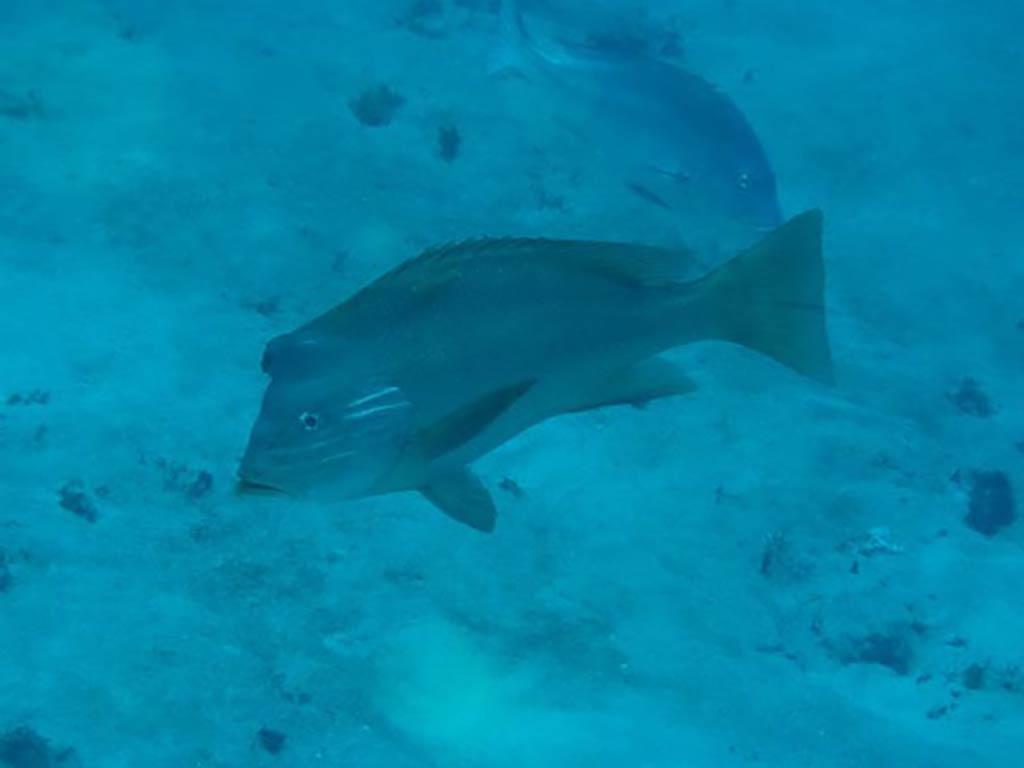
This large, dark-colored Snapper gets its name from the distinctive hump that develops on its forehead as it matures. They can grow to over 3 feet (1 meter) long and weigh over 30 pounds (15 kilos), making them an impressive sight on the line. Less well-known than some other snappers, they’re highly prized for their strong, thrilling fight and firm, flavorful flesh.
Where to find them: East Africa, Madagascar, the Seychelles, and Indian Ocean reefs.
Traits: Large, dark-colored fish with a distinctive hump on the forehead. They can grow very large and are considered excellent table fare.
8. Bigeye Snapper (Indo-Pacific)
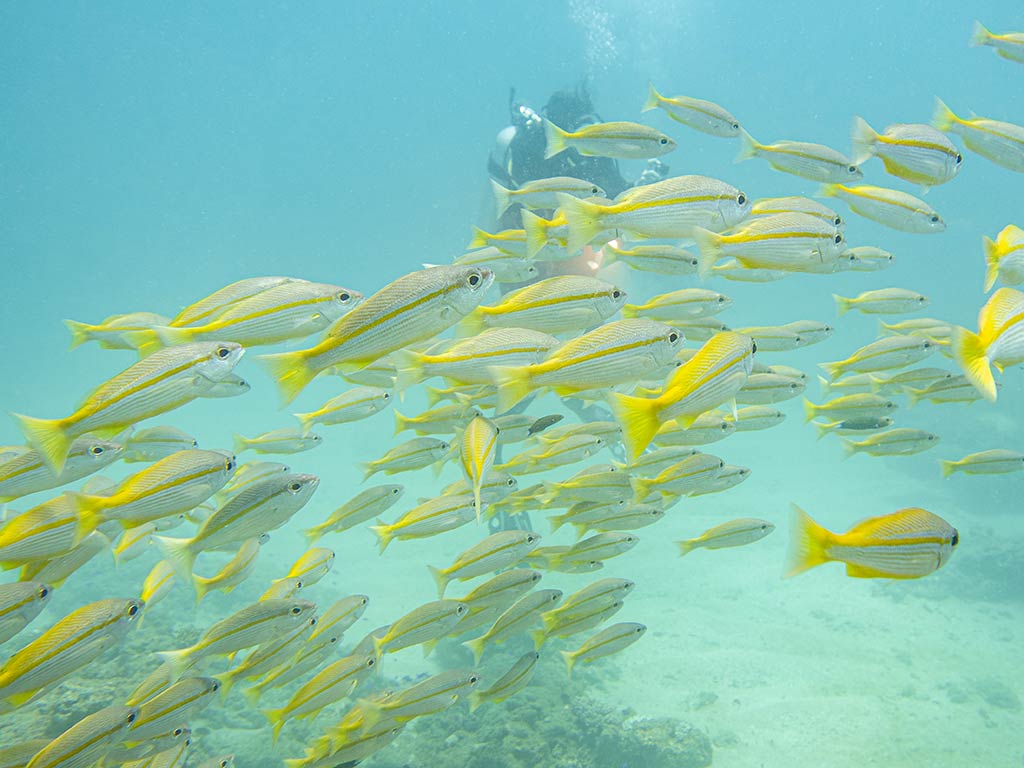
True to their name, Bigeye Snappers have unusually large eyes, helping them hunt in deeper, dimly lit waters. They’re typically caught in schools and are a common catch in many Asian fisheries.Growing up to around 20 inches (50 centimeters) long, they’re popular in both local markets and on dinner tables due to their mild, firm flesh.
Where to find them: Across the Indo-Pacific region, especially around reefs and deeper waters near Japan and Australia, as well as East Africa (as far south as South Africa), the Seychelles, and Pacific islands.
Traits: Golden or reddish bodies with large, round eyes. They most often swim in schools.
9. Two-spot Red Snapper (East Africa to Pacific)
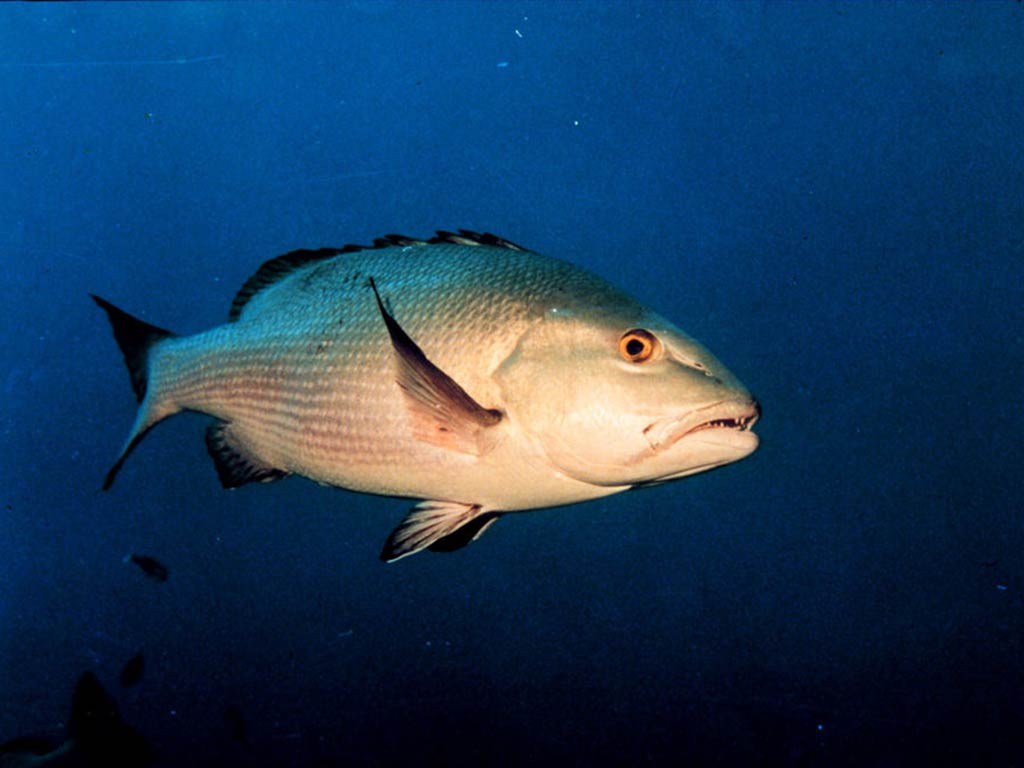
Easily identified by the two distinct black spots on their bodies, this species is popular among commercial fishers across the Indo-Pacific. They may not grow as big as Cubera or Red Snapper, but they’re abundant and extremely tasty.
Where to find them: From East Africa across the Indo-Pacific to Polynesia. Especially popular hotspots include the Maldives, the Great Barrier Reef, Guam, and wildlife parks in Indonesia.
Traits: Reddish bodies with two distinct black spots near the dorsal area. Medium-sized, with firm, white meat.
10. Pink Snapper (Australia & New Zealand)

Pink Snapper are a favorite for saltwater anglers in Australia and New Zealand. Known to put up a strong fight on the line, they’re equally prized on the plate for their firm, mild-flavored flesh. You’ll easily recognize them by their shimmering pink scales and interesting shaped heads.
Where to find them: Coastal waters of New Zealand and southern and eastern Australia, usually around offshore reefs and rocky bottoms.
Traits: Streamlined yet muscular bodies with a pink to reddish coloration with silvery undertones. They boast sharp teeth for hunting smaller fish and crustaceans.
11. Golden Snapper (Australia & South East Asia)

Also known as Fingermark Bream, Golden Snapper are highly prized in northern Australia and Southeast Asia. Their golden hue and excellent eating quality make them a standout species in the Indo-Pacific.
Where to find them: Northern Australia, Papua New Guinea, and Southeast Asian waters. Usually found lurking near reefs, estuaries, and rocky ledges.
Traits: Golden to bronze body with a distinctive dark spot near the gill cover. Excellent eating quality and can grow quite large.
12. Jobfish / Green Jobfish (Indian Ocean, Pacific Islands)
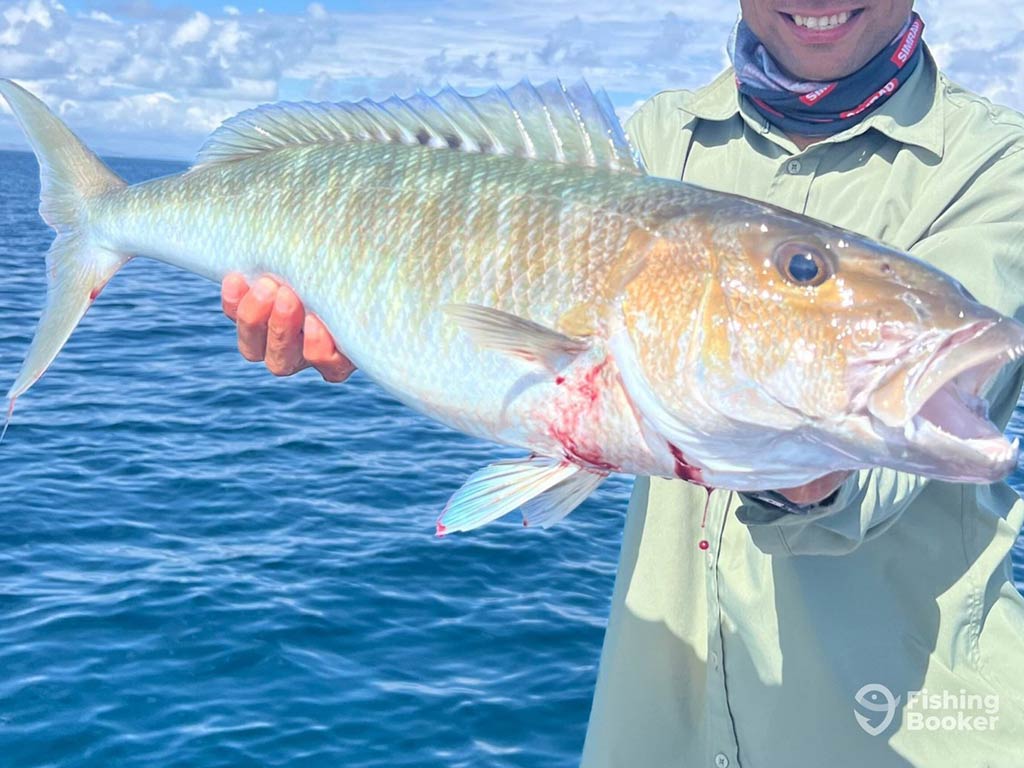
While not known by the “Snapper” name, all Jobfish are technically Snapper. This includes the Green Jobfish, also called Uku in Hawaii. Sleek and torpedo-shaped, these fish are built for speed and power. Anglers prize them not just for the fight they put up on the line, but also for their firm, flavorful meat that rivals any reef fish.
Where to find them: The Indian Ocean, Hawaii, the Pacific Islands, and parts of Southeast Asia. They lurk around reefs, drop-offs, and open waters.
Traits: Streamlined green-blue bodies with forked tails, built for speed and power.
Of course, these are just a handful of the many Snapper fish species found around the world. With hundreds more out there – some famous locally, others lesser-known – you’ll never run out of new varieties to discover. That’s where our honorable mentions come in…
Snapper Fish Species: Honorable Mentions
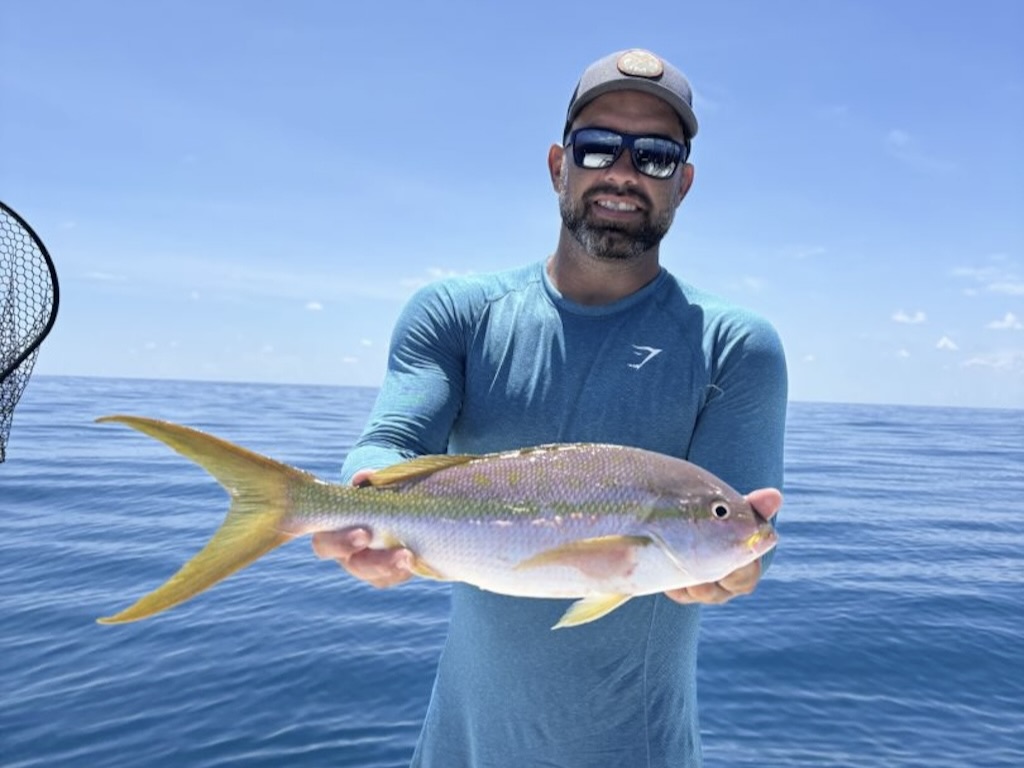
With over 250 Snapper fish species around the globe (we know you know by now, but why not keep mentioning what an impressive feat it is?!), there are plenty more that deserve some recognition. While not as universally famous as the species we listed above, these varieties are beloved by local anglers and often make excellent table fare:
- Dog Snapper: Found in the Caribbean and Central America, these Snappers are recognized by a distinctive white triangle patch between their eyes.
- Silk Snapper: A deep-water species with a pinkish body and yellow eyes, common in the Caribbean and western Atlantic.
- Blue-lined Snapper: Vibrant yellow fish with bright blue stripes, often seen schooling in large numbers across the Indo-Pacific.
- Crimson Snapper: Sometimes confused with the Red Emperor Snapper, the Crimson Snapper is an Indo-Pacific favorite, prized for its vivid red color and firm, flavorful flesh.
- Mahogany Snapper: A smaller but tasty Caribbean Snapper with a reddish hue and dark eye stripe.
- Caribbean Queen Snapper: A striking Snapper with a pinkish-silver body and distinctive blue lines along its face, prized for both sport and flavor.
- Yellowtail Snapper: A colorful Caribbean Snapper with a bright yellow stripe and tail, known for its fast fight and tasty, flaky flesh.
- Vermilion Snapper: A bright red Snapper with a slender body and forked tail, popular with anglers for its tasty, firm flesh and energetic fight.
These “bonus” species show just how diverse and widespread the Snapper family really is. Whether you’re fishing the reefs of Florida, the islands of the Pacific, or the coasts of Africa, chances are you’ll encounter a unique Snapper waiting to put up a fight. Why not make yourself a Snapper bucket list and see how many of these incredible varieties you can tick off? Not only is it an excuse to travel to a whole host of exciting locations, but you’ll get to see just how unique each of these fish is, too!
Snapper Fish Species FAQs
Snapper Fish Species: Global Fan Favorites!

With a whopping number of Snapper fish species to discover, the world of Snapper is vast, exciting, and full of variety. From the famous Red Snapper in Florida to exotic varieties in the Indo-Pacific, each species offers its own unique challenge for anglers and delights for seafood lovers.
Whether you’re planning your next fishing adventure or just curious about these incredible reef dwellers, there’s always a new Snapper species to discover. Get working on that bucket list and see which Snappers you can come face-to-gills with!
Now over to you – which Snapper varieties have you caught? Which are your favorite to target? Drop us a comment below with your best stories. We love to hear from you!
The post Snapper Fish Species: Your Guide for 2025 appeared first on FishingBooker Blog.
https://fishingbooker-prod-blog-backup.s3.amazonaws.com/blog/media/2025/01/02110720/queen-snapper-dsf.jpg
0 Comments
Enregistrer un commentaire